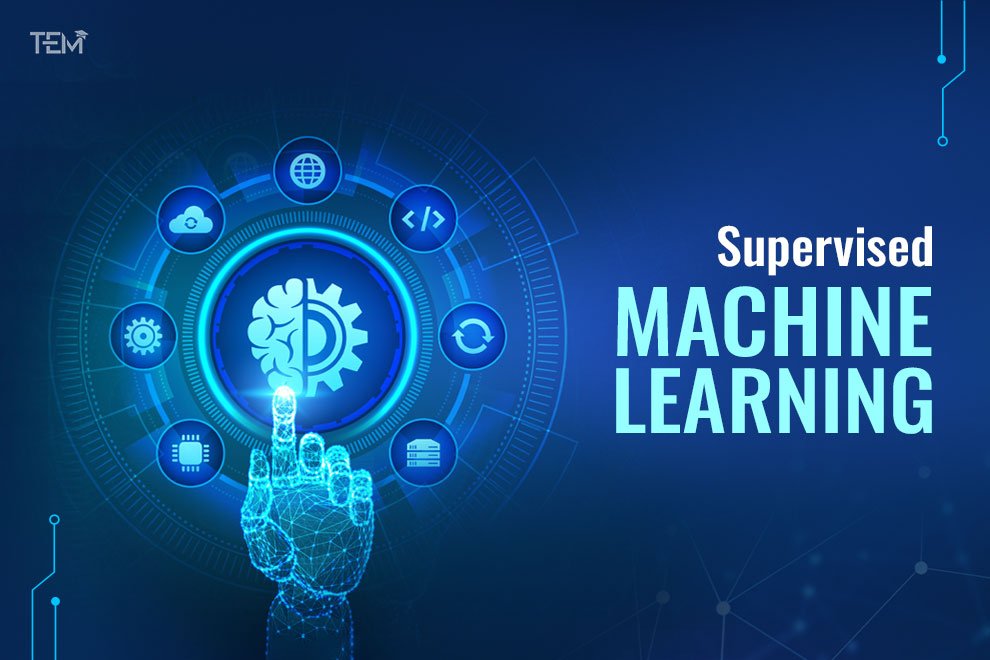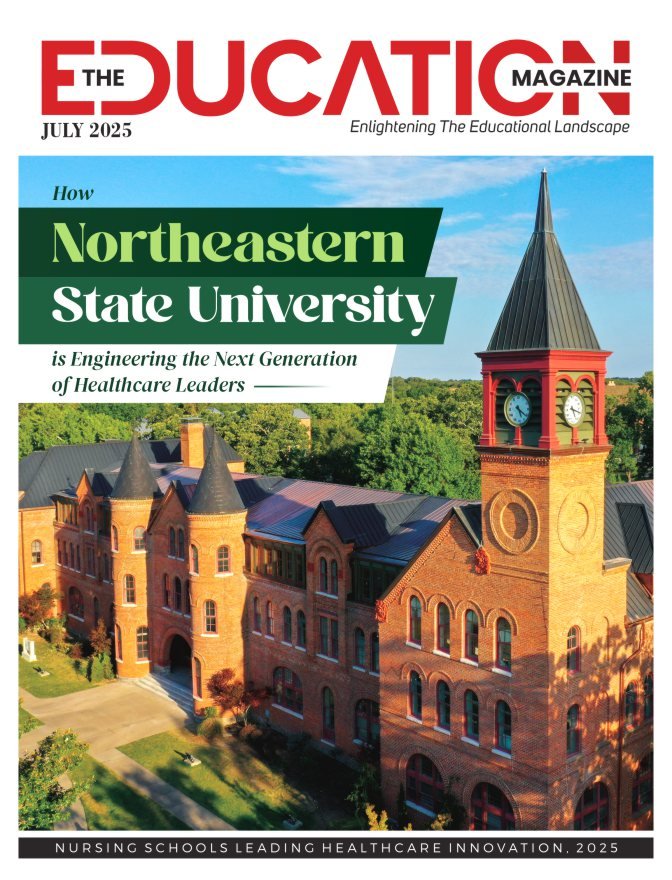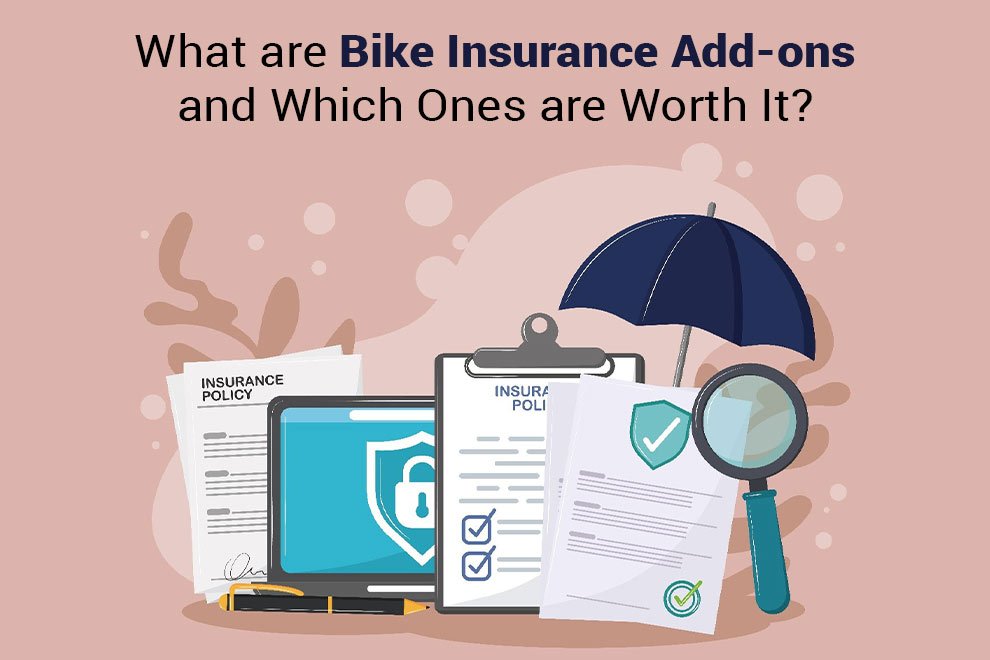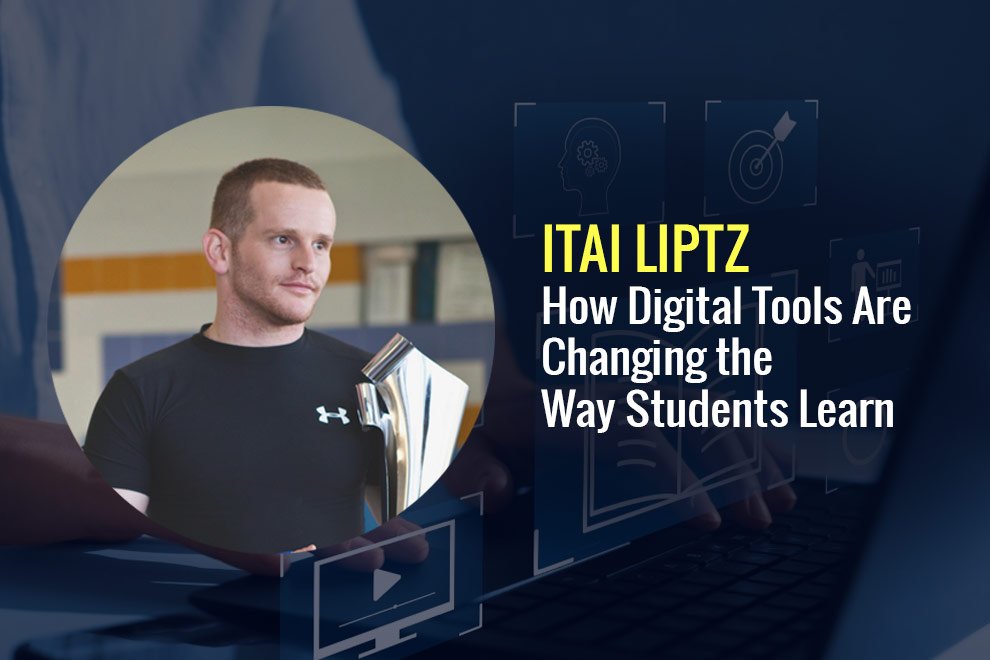Imagine teaching a child using flashcards — you show an apple, say “apple,” and they remember it. That’s exactly how supervised machine learning works. It learns by example — from labeled data — and then applies that learning to make accurate predictions.
From spam filters in your email to disease diagnosis in hospitals, supervised learning powers tools we use every day. But how does it actually work? What makes it reliable? And why does everyone from startups to research labs trust it?
In this guide, we’ll break it down step by step — with real-life examples, clear logic, and absolutely no fluff. You’ll understand how models train, how they’re tested, when to use them, and what to watch out for.
Whether you’re just curious or planning to build your first model, this is your complete, no-nonsense introduction.
How Supervised Machine Learning Works: The Training Process
Supervised machine learning is like teaching a child with flashcards. You show examples, give correct answers, and the model learns patterns from them. Here’s how the training process works, step by step.
1. What Is the Workflow of Supervised Machine Learning?
Let’s break down the supervised learning process into simple steps that even a third grader can follow.
Data Collection & Labeling
The Foundation of Learning
- We start by collecting data, like images, texts, or numbers.
- Each data point comes with a label (like “cat” or “dog”).
- Imagine showing a student an image of a mango with the word “mango” below it.
Why it matters:
- The model learns by comparing the input to the correct output.
- Poor labels = poor learning. This is why data quality is non-negotiable.
Fact: According to IBM, 80% of AI project time goes into collecting and cleaning data.
2: Data Preprocessing
Preparing for Success
We clean and prepare the data so the model doesn’t get confused.
- Handle missing values: Fill or drop them smartly.
- Scale features: Use normalization or standardization for fair comparison.
- Encode categories: Convert text (like “Red”) into numbers.
- Spot outliers: Remove weird values that can mislead the model.
3: Splitting the Dataset
Preventing Overconfidence
- Training set (70%): For learning.
- Validation set (15%): For tuning the model.
- Test set (15%): For checking accuracy on new data.
Tip: Never test on the data the model has already seen.
4: Choosing the Right Algorithm
Not All Models Fit All Problems
- Use decision trees, support vector machines, or neural networks.
- Think of it like choosing a vehicle for a trip — not all roads need a sports car.
5: Training the Model
This Is the Learning Phase
- The model tries to match the input to the output.
- It improves by reducing errors step by step.
6: Evaluating the Model
Measuring What It Learned
We use metrics like:
- Accuracy: How often is it right?
- Precision & Recall: How well does it spot the right things?
A good model should reach over 90% accuracy on test data in many practical cases.
7: Making Predictions
Time to Use What It Learned
Now, we give new data (without labels), and the model predicts the answer.
It’s like a trained student answering questions during a test — confidently and correctly.
Types of Supervised Learning Tasks: Classification vs. Regression
Supervised machine learning has two main goals: classifying things or predicting numbers. That’s it. Think of it as answering two types of questions — What is it? vs. How much is it?
A. Classification: Predicting Categories
What is classification in supervised machine learning?
Classification is used when the answer is a category, like “yes” or “no”, or “cat” vs. “dog”.
Use cases:
- Email spam detection
- Medical diagnosis (e.g., disease: yes/no)
- Image recognition (e.g., face ID)
Top Classification Algorithms (Explained Simply)
- Logistic Regression:
Best for binary answers. It tells you the probability of something belonging to a class.
- Support Vector Machines (SVM):
Think of it as drawing the best line between two groups.
- Decision Trees & Random Forests:
Like asking a series of yes/no questions to reach an answer. Random Forests use many trees for better results.
- K-Nearest Neighbors (KNN):
It checks the ‘k’ closest examples to guess the answer. Like copying answers from your neighbors in a test!
- Naive Bayes:
Great for text data. It uses probabilities based on past data.
B. Regression: Predicting Continuous Values
What is regression in supervised machine learning?
Regression answers how much or what number?
Use cases:
- House price prediction
- Stock value forecasting
- Monthly sales estimation
Top Regression Algorithms (Explained Simply)
- Linear Regression:
Draws the best straight line through data points.
- Polynomial Regression:
Uses curves instead of straight lines for complex data patterns.
- Ridge & Lasso Regression:
Helps when there are too many features. They simplify the model to avoid overfitting.
- Decision Trees & Random Forests:
Yes, these can predict numbers too, not just categories.
Key Supervised Learning Algorithms: A Deeper Dive with Examples
Supervised machine learning teaches machines to learn from examples, just like we do. But every problem needs the right method. Let’s break down three powerful algorithms you’ll often come across and explain them like real-life stories.
A. Linear Regression
What it is:
Linear regression helps predict a number based on past data. Imagine you’re trying to guess someone’s height based on their age. Linear regression finds a straight-line connection between those two things.
How it works:
It draws the best straight line through your data — a line that gets as close as possible to every point. The closer the line, the better the prediction.
Real-world use:
Used in predicting house prices, where input like square footage and location helps estimate a value.
B. Logistic Regression
What it is:
Despite the name, logistic regression isn’t for numbers — it’s for yes or no questions. It answers: Is this a spam email? Will this patient test positive?
How it works:
It calculates a probability (like a 70% chance of “yes”), then decides the final answer based on a set cutoff.
Real-world use:
Medical tests, loan approvals, and fraud detection tools use this algorithm every day.
C. Decision Trees
What it is:
Think of a decision tree like a flowchart. It keeps asking yes/no questions at each step to reach an answer. It’s like playing 20 questions, but for data.
How it works:
Each decision splits the data further until the system can confidently say, “This is the answer.”
Real-world use:
Used in credit scoring, job candidate shortlisting, and even diagnosing diseases.
Pros:
- Easy to understand
- No need to scale numbers
- Works with both text and numbers
Cons:
- Can make overly complex rules (overfitting)
- Sensitive to small changes in data
Evaluating Supervised Learning Models: Beyond Basic Accuracy
Building a model is just the start. The real challenge? Knowing if it works well — and why. In supervised machine learning, evaluation isn’t just about how often you’re right. It’s about how reliably and fairly your model performs.
A. Why Evaluation Metrics Matter
Not all predictions are equal. A model might be accurate but still miss important patterns. For example, in disease detection, missing even a few true cases can be dangerous. That’s why we go beyond just accuracy to check deeper model behavior.
B. Evaluating Classification Models
1. Accuracy
- Shows how often the model is correct.
- Best for: Balanced datasets.
- Misleading if: Classes are imbalanced (e.g., detecting rare diseases).
2. Precision, Recall, F1-Score
- Precision: Out of what the model predicted as positive, how many were correct?
- Recall: Out of all actual positives, how many did the model catch?
- F1-Score: The balance between precision and recall.
- Trade-off: High precision can lower recall, and vice versa.
3. Confusion Matrix
- A simple 2×2 grid showing correct and incorrect predictions for each class.
- Helps visualize true positives, false positives, false negatives, and true negatives.
4. ROC Curve and AUC
- ROC Curve: Shows the trade-off between true positive rate and false positive rate.
- AUC (Area Under Curve): Higher means better distinction between classes.
C. Evaluating Regression Models
1. Mean Absolute Error (MAE)
- Measures the average distance between predicted and actual values.
- Easier to understand as it keeps errors in actual units.
2. Mean Squared Error (MSE) & Root Mean Squared Error (RMSE)
- MSE penalizes large errors more than small ones.
- RMSE brings the error back to the same unit as the target.
- Use when big errors hurt more.
3. R-squared (R²)
- Explains how much of the variation in output is explained by the input.
- Ranges from 0 to 1 — closer to 1 is better.
Challenges and Best Practices in Supervised Learning
Supervised machine learning is powerful, but not perfect. Just like building a house, the process has its weak points. Let’s explore common challenges and how professionals tackle them smartly.
A. Common Challenges
1. Data Dependency
The model learns from the data you feed it. If your data is poor, your results will suffer. This is known as the “Garbage In, Garbage Out” problem.
2. Overfitting and Underfitting
- Overfitting: Model performs well on training data but fails on new data.
- Underfitting: Model fails to capture patterns at all.
To balance this, use:
- Cross-validation
- Regularization techniques (like L1/L2)
- Pruning in decision trees
3. Computational Cost
Large datasets or complex models demand heavy processing power. This can slow down development and increase costs.
4. Interpretability
Some models act like “black boxes.” You get the result, but you can’t explain how it got there. This is risky in areas like finance and healthcare.
5. Ethical Considerations & Bias
Bias in data leads to biased predictions. This can cause unfair outcomes in hiring, lending, or policing. Responsible AI practices are essential for trust and fairness, a key part of EEAT.
B. Best Practices
To avoid problems and build reliable models, follow these proven steps:
- Focus on Data Quality: Always use clean, well-labeled data.
- Preprocess Carefully: Fill missing values, scale features, and detect outliers.
- Feature Engineering: Create new features that highlight deeper insights.
- Smart Model Selection: Choose algorithms wisely and fine-tune them.
- Monitor Regularly: Test the model often, even after deployment.
- Version Everything: Keep track of your data, models, and changes over time.
Real-World Applications of Supervised Machine Learning
Supervised machine learning isn’t just a theory — it’s driving many tools we use every day. From emails to hospitals, this technology is working behind the scenes to make smarter, faster decisions.
Let’s explore some of the most impactful and practical uses.
A. Spam Detection & Email Filtering
When your inbox automatically pushes spam into the junk folder, thank supervised learning.
It learns from past labeled emails to recognize unwanted ones and keep your inbox clean.
B. Image Recognition & Object Detection
Whether it’s unlocking your phone with your face or identifying a car in traffic footage, image-based models are in action.
These models classify objects in pictures using millions of labeled image examples.
C. Medical Diagnosis
Doctors now use AI to support decisions, like spotting signs of cancer in scans.
With labeled data from past diagnoses, models predict diseases faster and sometimes more accurately.
D. Fraud Detection
Banks use machine learning to detect unusual behavior, like strange ATM activity.
The model flags suspicious transactions by learning from both normal and fraudulent cases.
E. Predictive Analytics
From predicting customer churn to estimating future sales, supervised models offer powerful forecasts.
Businesses plan better with data-driven predictions built on past trends.
F. Recommendation Systems
When Netflix suggests what to watch next, it’s not guessing.
The model learns from watching history and preferences to serve personalized results.
G. Natural Language Processing (NLP)
In sentiment analysis, the model reads reviews and decides if they’re positive or negative.
It’s also used in chatbots, email sorting, and language translation apps.
Supervised Learning vs. Unsupervised Learning
Supervised and unsupervised learning are two major types of machine learning. But how do they differ — and when should you use one over the other?
Let’s break it down in the simplest way possible.
A. Key Differences: Labeled vs. Unlabeled Data
Supervised Learning
- Learns from labeled data (every input comes with the correct output).
- Like teaching a student with a key, they learn faster because answers are known.
- Example: Predicting house prices when you already know past house prices.
Unsupervised Learning
- Works on unlabeled data — no answers provided.
- The model finds patterns or groups on its own.
- Example: Grouping customers into segments without knowing anything about them beforehand.
In short:
Supervised learning solves “What is this?” or “How much?”
Usupervised learning asks, “What’s similar here?” or “What stands out?”
B. When to Use Which
Use Supervised Learning When:
- You have historical data with labels
- You want to predict outcomes (classification or regression)
- Tasks include spam detection, medical diagnosis, and loan approvals
Use Unsupervised Learning When:
- You don’t have labeled data
- You want to explore, group, or spot patterns
- Tasks include market segmentation, customer clustering, or anomaly detection
Future of Supervised Machine Learning & Advanced Topics
Supervised machine learning is evolving fast. It’s not just about basic prediction models anymore — it’s moving toward smarter, deeper, and more automated systems. Let’s explore what’s next.
A. Deep Learning and Neural Networks
Deep learning takes supervised machine learning to another level. It uses neural networks — layers of connected nodes that mimic how our brain works.
Why it matters:
- It solves complex problems like voice recognition, image analysis, and real-time translation.
- The model doesn’t just memorize — it understands patterns at multiple levels.
Example:
Deep learning powers face recognition in your smartphone and voice assistants like Alexa or Siri.
B. Transfer Learning
Transfer learning is like reusing knowledge from one task to solve another.
How it helps:
- You don’t need to train a model from scratch.
- A model trained on one dataset (like images of animals) can be adapted to another (like medical scans).
Real benefit:
Saves time, cost, and computing power — ideal for small businesses and research projects.
C. Automated Machine Learning (AutoML)
AutoML lets machines build machine learning models on their own.
Why it’s the future:
- No need to be an expert in algorithms or tuning.
- It handles tasks like model selection, feature engineering, and hyperparameter tuning.
Where it’s used:
Startups, finance, healthcare, and even marketing teams now use AutoML tools to build smarter models, faster.
Key Takeaways
Supervised machine learning isn’t just a buzzword — it’s a system that quietly powers much of our daily tech. From my personal experience working on models in real-world settings, I’ve learned one core truth: the quality of your data matters more than the model itself. If the input is messy or mislabeled, even the best algorithm fails. This “Garbage In, Garbage Out” principle holds up every single time.
Another lesson? Simpler models like decision trees or linear regression can outperform complex neural networks — if used wisely. It’s not always about being fancy; it’s about fit and clarity.
Evaluation is equally vital. I’ve seen teams fall into the “accuracy trap,” only to realize later that precision or recall mattered more. And ethics? Non-negotiable. A biased model is not just flawed — it’s dangerous.
In the end, supervised learning is less about machines and more about decisions. The better your data, the clearer your goals, the smarter your choices — the more powerful the outcomes.
This isn’t about coding models. It’s about teaching them to think — and holding them accountable when they do.









